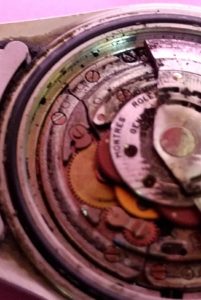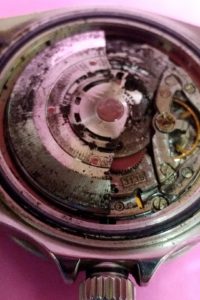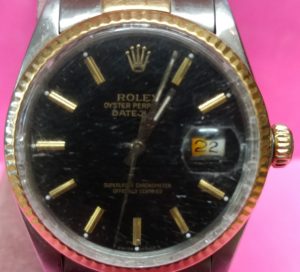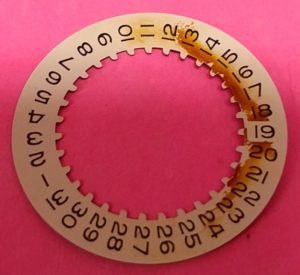As the summer is winding down and we just celebrated the Labor Day weekend. I thought I would like to give all of my customers one more reason NOT to wear their watch in the water. I have had an unusually high number of watches arrive at the shop this summer with water damage. Most are simply rusted from fresh water, the worst that arrive have had an encounter with saltwater. I thought that I would show a few pictures of the difference between the damage from salt water to freshwater.
Salt Water Damage
This Rolex Submariner arrived at my shop with terrible salt water damage. It was rusted beyond any repair and was returned to the customer as is with no work done. It is way past the point of any simple repair and probably needs a new movement. Score one for Salt water.



Salt water causes a nasty black rust in a movement. The rust has a very unusual smell and is just about impossible to clean off a movement. Keep your watch out of the ocean!!
Rolex versus Fresh Water
This watch arrived with quite a bit of fresh water inside the movement. There was water on the dial and all over the movement. I had to immediately clean this watch before the watch rusted any more. Once I open the back of a watch and see water, I need to clean it at that moment. If I wait until the next morning, it may be rusted beyond repair. A watch movement will normally rust as soon as it is exposed to air. So if you get your watch wet, don’t try and take the back off and “dry it” that is just going to make things worse.






